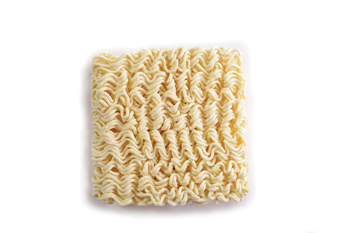Instant Noodles Won’t Save the World, But Here's How They'll Help
By Caroline J. Hanna
[Research] As government officials and food authorities ponder the ever more urgent question of how to feed a ballooning global population, one Amherst professor is exploring an answer that some experts have suggested: instant noodles.
In a new book, anthropologist Deborah Gewertz examines the history, manufacturing, marketing and consumption of instant noodles and makes the case that this staple of the American college student diet will play an increasingly significant role on the world stage.

“Instant noodles have already shown a remarkable capacity to ease themselves into diverse lives,” says Gewertz, the G. Henry Whitcomb 1874 Professor of Anthropology. “We expect that the calories provided by the tasty, convenient, cheap, shelf-stable, industrially prepared instant noodles will remain important” as food becomes scarcer.
In The Noodle Narratives: The Global Rise of an Industrial Food Into the Twenty-First Century, Gewertz and two co-authors, Frederick Errington and Tatsuro Fujikura ’91, focus on three markets:
Japan: Instant noodles were invented there in 1958 and were a sign of modernity in the decades after World War II. Later, they came to be seen as a convenient snack. After the Japanese market was saturated in the 1990s, manufacturers tweaked flavors, toppings and packaging in order to entice consumers.
United States: Here, instant noodles are important to college students, their nostalgic parents, the impoverished and prison inmates. For the latter, they provide a taste of freedom.
Papua New Guinea: Instant noodles arrived in the 1980s as a cheap option for the urban poor, who eat them for snacks, meals and while entertaining guests, and who also use the included flavoring packets in other dishes. The noodles are cultivating this group of people as future consumers of other mass-produced items.
The book explores how manufacturers might make instant noodles more healthful—by, for example, baking instead of frying them, adding iron or using spices in place of salt. “With 9 billion people in this world by 2050 and most of them living in cities,” Gewertz says, “we know that it is going to take some kind of industrial production to feed them. Instant noodles, as they are right now, are certainly not going to make people healthy. But they do fill bellies, and they will keep people alive. I can’t say that is a bad thing.”
As such, “we find it difficult to imagine the increasingly urbanized food future without this humble form of salty, MSG-enhanced, oily, and sometimes sugary capitalist provisioning,” the authors write. “Instant noodles will definitely not save the world, but they will continue to help a wide range of people deal with the often harsh exigencies of their lives. With some reluctance, we believe that this is for the better, not for the worse.”

Know Your Noodles
- The Mama Noodles economic index in Thailand was based on the theory that sales of instant noodles increased because people could not afford pricier foods.
- There are several websites devoted to the meals that U.S. prisoners have created by combining instant noodles with other foods, such as peanut butter and Kool-Aid.
- Momofuku Ando invented Instant noodles in 1958 in Japan, where they became a sign of modernity. Now they are commemorated in three Japanese museums.
- In Papua New Guinea, “schoolchildren may purchase cups of instant noodle soup from a mobile cart, drink the liquid and place the remaining noodles in a scone to make a noodle sandwich,” according to The Noodle Narratives.
- The World Noodle Association estimates that 95.39 billion packages and cups of instant noodles were sold in 2010.